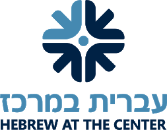Inquiry and Curiosity: Three JPDS-NC Sixth Graders Participate in DC STEM Fair
March 9, 2017 by
Have you ever wondered whether acidic fruit conducts electricity better than less acidic fruit? Or whether the pesticides we use on plants actually impact the growth of those plants? What about considering the effect of temperature on a polymer used for watering plants? Or how the food a chicken eats impacts the color of the yolks of their eggs? All our Sixth Grade students went on a journey of scientific discovery for their Inquiry Projects, where they asked a question and designed an experiment to consider the cause and effect of a change, and measure the results of that change.
Emmett B., Ana S., and Lael S. were selected to represent JPDS-NC at the DC STEM Fair, the premier student competition for Science, Technology, Engineering, and Math in Washington, D.C. for students in Grades 6 to 12. Each school is allowed to submit up to three projects for competition. On February 23, JPDS-NC students presented their projects to a panel of judges at the Carnegie Institute of Science. The judges asked each student to explain every nuance of their experiment, about the data collected, and why the topic they studied is important for people to understand. The students were also asked to reflect on any mistakes they made, how they would change their experiment to be stronger, and what they gained from the Inquiry Project process.
Each Sixth Grader investigated one question in depth, and the process often lead to even more questions. For example, Emmett wanted to better understand whether pesticides affect the growth of plants. He grew sunflower seeds and added Deltamethrin (an ingredient in Raid bug spray) and DEET (an ingredient in Off bug spray) to determine whether they would impact the height of the plants. He found that the results differed, and that Deet stunted the plants growth while Deltamethrin did not, as compared to a control. This led Emmett to ask further questions, such as how the chemicals actually affected the plants: whether these chemicals clogged the plants’ stomata, or whether the chemicals were absorbed by plants’ cells. Emmett also wondered whether using a chemical meant to kill insects would have had a different impact than using a chemical meant to repel insects, as well as how pesticide use affects pollution in the form of run-off. The initial question that Emmett explored and the Inquiry Project process allowed him to follow his curiosity and extend his learning and experimentation.
The Independent Inquiry Projects also provided students with an opportunity to research concepts in depth and to use equipment and tools that they may not have been exposed to previously. For example, Ana was curious to find out if a stronger acid would conduct more electricity. She had researched a lemon battery, a project that is readily available on the internet, and chose to expand that concept and compare different fruits. To conduct this experiment, she learned about acids, ions, electrolytes, and the concept of a “salt bridge,” which helps conduct electricity in a liquid-based environment. In Ana’s own words, “Acids help transfer the electrons in a chain from one point to another to help produce a current. When that happens, that is called the oxidation-reduction reaction, also known as the redox reaction.” She also learned to use a multimeter to measure the conductivity of the system in volts and practiced measuring the pH of the fruit she was using. Ana proved her hypothesis – that fruits with a lower pH (stronger acids) conducted electricity more effectively than those with a higher pH. And she too was left with more questions to answer. The strawberries registered a zero on the multimeter. Was it the size of the fruit? Now that her initial project is complete, Ana is challenged to keep exploring her question and to adapt her procedures to learn more.
The Inquiry Projects offered Sixth Graders to practice how scientists do their work. Lael studied water beads, a superabsorbent polymer (a large molecule that can absorb large amounts of water) that can typically absorb up to 200 times its weight in water. Water beads are often used in agriculture to provide water to plants in arid regions. Lael wanted to know whether the temperature of the liquid that the water beads were placed in would impact the size to which they grew, which could influence how the beads are used in the real world. Lael developed a system to measure the volume of the water beads, as well as the amount of water left in the container, and devised a method to maintain the different temperatures at which the beads had to be kept in order to conduct her experiment. She predicted a positive correlation, meaning that the warmer the water, the larger the beads would grow. As it turned out, that was not exactly the case: according to her experiment, the beads kept in the hottest water were not the largest. Lael hypothesized that perhaps when the temperature is too hot, the water beads themselves begin to dissolve and cannot work as effectively. Like her classmates, Lael learned that conducting one experiment often leads to more questions.
In their reflections on their Independent Inquiry Projects, the sixth graders shared that they learned that being a scientist takes time and patience, that there will likely be failures and human error as part of the process, and that you will likely have more questions at the end of the process. They also learned that one of the most challenging and important parts of conducting an experiment is doing thorough background research to ensure your question fits in the world of science, and that you have an understanding of what we already know about your topic.
Kol hakavod to the three DC STEM Fair entrants, and to all the sixth graders for their curiosity and persistence as they designed testable questions and collected, analyzed, and presented their data.






